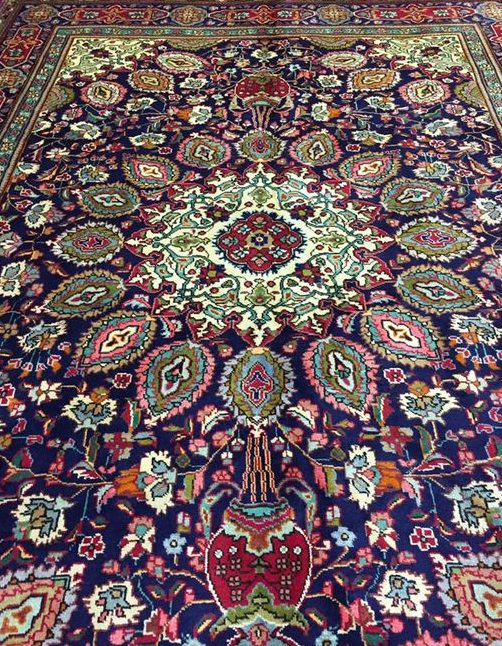
Tabriz rugs, originating from the ancient city of Tabriz in northwest Iran, are considered among the finest and most sought-after Persian rugs in the world. Renowned for their exceptional beauty, artistry, and meticulous craftsmanship, Tabriz rugs have an enduring allure that has captivated collectors and enthusiasts for centuries.
This comprehensive guide aims to provide you with the necessary knowledge and insights to identify authentic Tabriz rugs, highlighting their unique characteristics, symbols, and techniques.
I. Historical Background of Tabriz Rugs:
To truly understand and appreciate Tabriz rugs, it is important to delve into their fascinating historical background. Tabriz has been a center for rug production for over 500 years, with its weaving traditions dating back to the Safavid Empire in the 16th century. The city’s skilled artisans have mastered the art of rug making, passing down their expertise through generations. Tabriz rugs draw inspiration from various periods, including the Safavid, Qajar, and Pahlavi dynasties, each contributing distinct design elements to these exquisite creations.
II. Characteristics of Tabriz Rugs:
1. Materials and Construction:
Tabriz rugs are crafted using high-quality natural materials such as wool, silk, and cotton. The use of durable wool as the foundation ensures longevity, while the addition of silk highlights intricate details and adds a luxurious sheen. These rugs are woven using the asymmetric (Persian) knot technique, resulting in a dense and durable pile.
2. Design and Patterns:
Tabriz rugs are renowned for their elaborate designs and intricate patterns. The most common designs include medallions, all-over floral motifs, pictorial scenes, geometric patterns, and elaborate curvilinear arabesque designs. The attention to detail, precision, and vibrant color palettes are hallmarks of Tabriz rug designs.
3. Knot Density and Fineness:
A distinguishing feature of authentic Tabriz rugs is their high knot density, which contributes to the extraordinary level of detail. Tabriz rugs typically have high knot counts ranging from 200 to 600 knots per square inch (KPSI), showcasing the weavers’ exceptional skill and precision.
III. Symbolism in Tabriz Rugs:
Tabriz rugs often feature symbolic motifs and patterns that hold special significance in Persian culture. Some common symbols and their meanings include:
1. Tree of Life: Represents immortality, paradise, and the connection between heaven and earth.
2. Boteh (Paisley): Symbolizes fertility, eternity, and rebirth.
3. Herati: A fish-like motif symbolizing prosperity and abundance.
4. Shah Abbasi: A distinctive motif featuring stylized floral patterns, symbolic of the Safavid dynasty.
IV. Identifying Authentic Tabriz Rugs:
1. Signature and Seal:
Many Tabriz rugs bear the signature of the weaver or workshop, often found in the border or within the design. Additionally, reputable master weavers sometimes affix seals, providing a mark of authenticity and quality.
2. Quality and Craftsmanship:
Examine the rug’s overall quality, paying attention to knot density, fine weaving, and precision in design. Authentic Tabriz rugs exhibit unparalleled craftsmanship, with consistent knots and meticulous attention to detail.
3. Rug Back:
Inspect the back of the rug to identify the knotting technique. Authentic Tabriz rugs employ the Persian knot technique, forming a series of symmetrical knots visible on the reverse side.
4. Expert Opinion:
If in doubt, seek advice from reputable rug dealers or experts specializing in Persian rugs. Their expertise can help verify the authenticity of a Tabriz rug by examining various factors such as material, design, knot density, and the reputation of the seller.
Conclusion:
Tabriz rugs stand as a testament to the rich cultural heritage and exceptional craftsmanship of Iranian artisans. By understanding the key characteristics, symbols, and techniques associated with Tabriz rugs, you can develop an eye for identifying authentic pieces. Whether you are a collector, enthusiast, or someone seeking to add a beatuful vintage or antique Tabris rug to your home.
